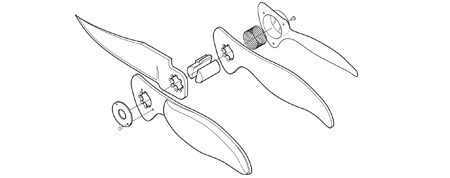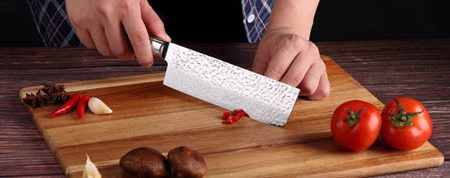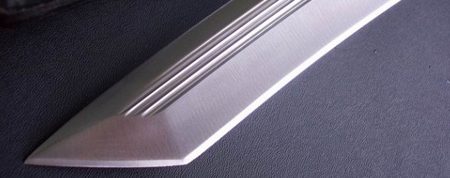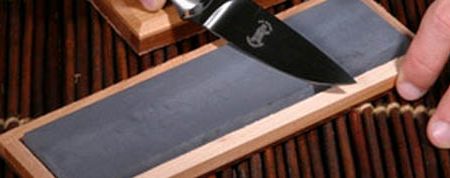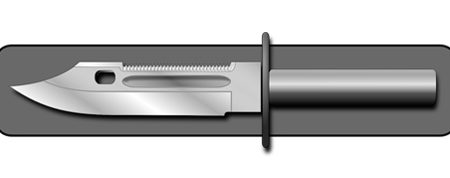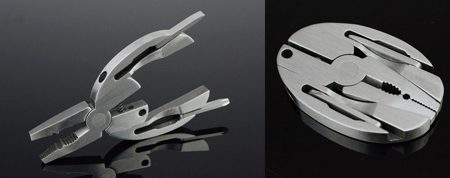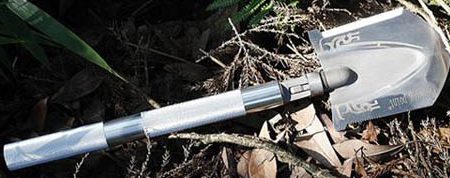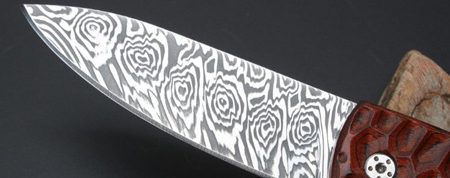A high-quality blade handle is important because it ensures your grip stays tight on the pocket knife. Each material has its own advantage in terms of performance and comfort, but it can also be a matter of aesthetics and personal preferences that dictate what you decide on. Here’s a brief breakdown of the most common type of handle materials and their characteristics.
Aluminum

Lightweight and often coated with a protective film, aluminum is frequently used in newer knives. It provides excellent grip and is especially suitable for knives that will be used in harsh weather conditions.
Celluloid

This synthetic plastic is made from cellulose nitrate and is known for its ability to morph into any color of the rainbow. Celluloid can also be fabricated to resemble most natural materials, such as ivory, horn, stag, pearl, amber, agate, tortoise shell and wood.
Bone

Another popular type of pocket knife handle, bone comes in a number of varieties, such as giraffe bone, jigged bone (often called stag), scored bone and smooth white bone.
Wood

Wood handles come in numerous forms. Stabilized woods are soft woods, like buckeye and burl, which must go through a stabilization process to make them hard enough to function as knife handles. Other woods that are commonly used for knife handles are blackwood, box, elder, bubinga, curly maple, koa, rosewood, snakewood and thuyas.
G-10

An extremely durable material, G10 is made of fiberglass, which is soaked in resin and compressed before being baked. G10 is strong, but also lightweight. It is water-resistant and handles well in inclement weather. For this reason, G10 is often used for tactical and survival knives. It is most commonly black, but can have other shades as well.
Micarta

Micarta is also known for its toughness, though it is not quite as hard as G10. A composite constructed from cloth or paper and phenolic resin, Micarta is especially popular in the plastic industry. Canvas micarta is frequently used in knife handles. It comes in either yellow or tan, though after it ages it will turn red/brown.
Titanium

Titanium handles are corrosion resistant, highly durable and lightweight. These are mostly found on newer pocket knives, and despite their strength and performance, titanium handles are sometimes perceived as cold and impersonal.
Zytel

Zytel is essentially unbreakable. Developed by Du Pont, Zytel is thermoplastic that’s resistant to impact and abrasion. Its low cost and durability has made Zytel a popular handle material. Although it has some very slight texture, Zytel is often augmented by manufacturers to create a better grip.
Stainless Steel

The blade doesn’t have to be the only thing on your knife made of steel. Handles made from stainless steel have some of the benefits as blades made from stainless steel. The material is corrosion-resistant and very durable. It can be a bit heavier and has a lower threshold to withstand tension than other metals like titanium. Despite unifying the look of a knife, some people find the look cold.
Delrin

Delrin is another thermoplastic from Du Pont. The material feels like a heavy, dense plastic that’s very smooth. Its softer than some of the other materials, so it will occasionally get scratches and scuffs, but it’s very durable.
Stag
Stag handles, which are made out of deer antlers that have naturally fallen off, have a rough texture that allows for a stronger grip. One of the major downsides of stag is its cost, which can be exorbitant.
Rubber

The prevalence of rubber in many other products gives rubber handles on pocket knives an instantly familiar feel and texture. Similar to Kraton, the material is usually used as an inlay to other materials but it can also be wrapped around the frame for a full rubber handle. Although it has a nice grip, rubber is not as durable as other synthetic materials.
Kraton

Similar to Zytel, Kraton is a thermoplastic but it’s soft and flexible. This is why Kraton is often used as an inlay to other materials or wrapped around a knife’s tang. The material is very grippy and gives a great sense of security when holding the knife.
Mother of Pearl

Mother of Pearl is a composite material made by mollusks. Basically, it’s what makes up the outer layer of pearls and is occasionally used in premium knives. It has a white iridescent appearance and is known as a long-lasting material.


